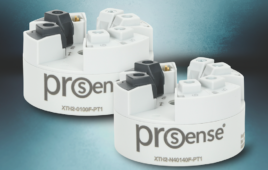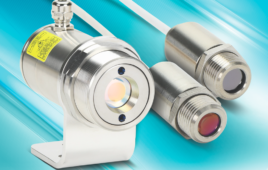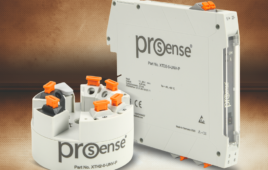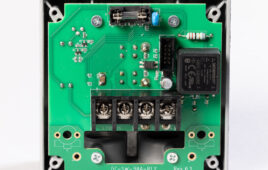By Darrell Hyde, Minco
For decades, miniature embedment temperature sensors have served an important purpose in many high-risk bearing applications — from motors, to pumps, generators, compressors, and more. Integrated directly into the bearing shoes, accurate temperature sensors play a crucial role in the prevention of overheating — or worse, irreparable harm to machine operators and mission-critical systems.

The S7 and TC7 sensor leads can be configured with either stainless steel feedthrough tubes, or elastomer filled cables to block oil from wicking out of the machine housing along the lead wires.
Despite the central importance of many of the machines these embedded sensors help protect, hazardous area certifications did not achieve wide usage until ten years ago in the aftermath of the BP oil spill. Although temperature sensors were not identified as a contributing factor in the oil rig’s explosion, the disaster became a catalyst for greater regulatory attention to equipment safety — particularly in hazardous conditions where a single spark could result in catastrophic outcomes.
Since then, certification has become one of the main strategies regulators have used to drive more rigor into part performance under hazardous conditions. As a result, the number of available certifications has grown significantly in the last decade. Different standards for bearing sensors now include regional certification — including CSAc-us (Canada and US), ATEX, (Europe), and IECEx (worldwide) — in addition to many country-specific certifications. While these standards represent a necessary step to preserve the integrity and safety of many mission-critical engines and machines, the proliferation of certifications has also created new challenges for the machine builders who must follow them—especially in an unpredictable post-pandemic world.
Identifying post-pandemic supply chain vulnerabilities
As supply chains worldwide continue to grapple with significant uncertainty created by COVID-19, expectations across supply chain ecosystems are rapidly evolving. More than ever, flexibility and versatility are crucial traits that can help a supplier or manufacturer navigate unpredictable external demands while protecting their bottom line.
According to a recent McKinsey report, traditional supply chain performance indicators have suffered dramatically in the months since the pandemic first began to stretch across the globe in March 2020. Nearly 50 percent of respondents indicated that material shortages had become a common issue in the last year. Another 41 percent of respondents indicated they had experienced steep drops in demand.
For many bearing manufacturers, temperature sensor certifications now represent one of the top potential barriers to downstream supply chain flexibility.
Before the pandemic, it was not uncommon for manufacturers to need to send back certified temperature sensors because they no longer met the requirements for a project as changes were introduced further down the value stream. For many manufacturers, this was accepted as a necessary evil in the production process. But as uncertainty becomes the norm, this has become a costly, time-consuming process—damaging a manufacturer’s bottom-line and jeopardizing their relationships with critical end customers.
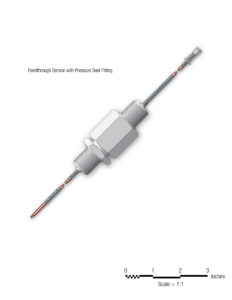
Feedthrough sensor with pressure seal fitting.
An increasingly necessary pursuit: engaging sensor partners who unlock consistent downstream supply chain flexibility.
To keep up with market fluctuation, manufacturers need access to bearing sensors that can do more to keep projects on track. This means integrating temperature sensors that can be used in a wider set of applications and regions. Sensor lines that offer multiple regional certifications can help manufacturers adapt more quickly to market surges and stalls – without the hassle of managing communications across multiple vendors or attempting to begin new vendor relationships during constrained timelines. Yet many thermal sensor suppliers continue to provide only one or two certifications for each sensor—creating significant coverage gaps.
Forward-thinking suppliers predicted this problem, and they have responded by focusing on simplifying the procurement process. For example, Minco recently launched a new line of S7 and TC7 miniature bearing embedment temperature sensors that are tri-certified to multiple standards (CSAc-us, ATEX, and IECEx). This multiple-certification approach to a product line allows bearing manufacturers to build with confidence, knowing they are covered for various use cases. Additional capabilities such as variable case sizes, RTD, and thermocouple element compatibilities, and lead wire and cable options can extend certification versatility to address even more applications and introduce additional resilience to the supply chain.
The economic turmoil created by COVID-19 has exposed new vulnerabilities in global supply chains that will have a lasting impact on the way many do business. Leading manufacturers must continue to find new ways to evolve their supply chain strategies to create new competitive advantages that allow them to capitalize on increased demand for agile production capabilities. In the future, those who prioritize strategies that support diverse, globalized supply chain networks will be the best prepared for the next unexpected disruption.
Minco
minco.com
Filed Under: Sensors (temperature)

